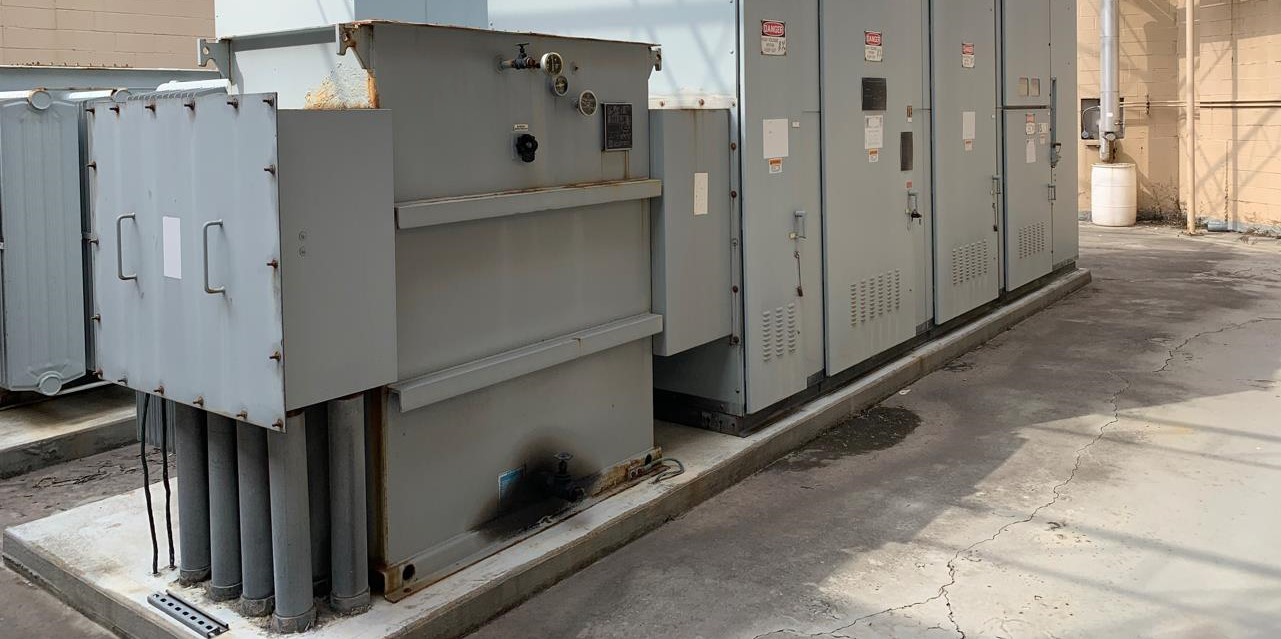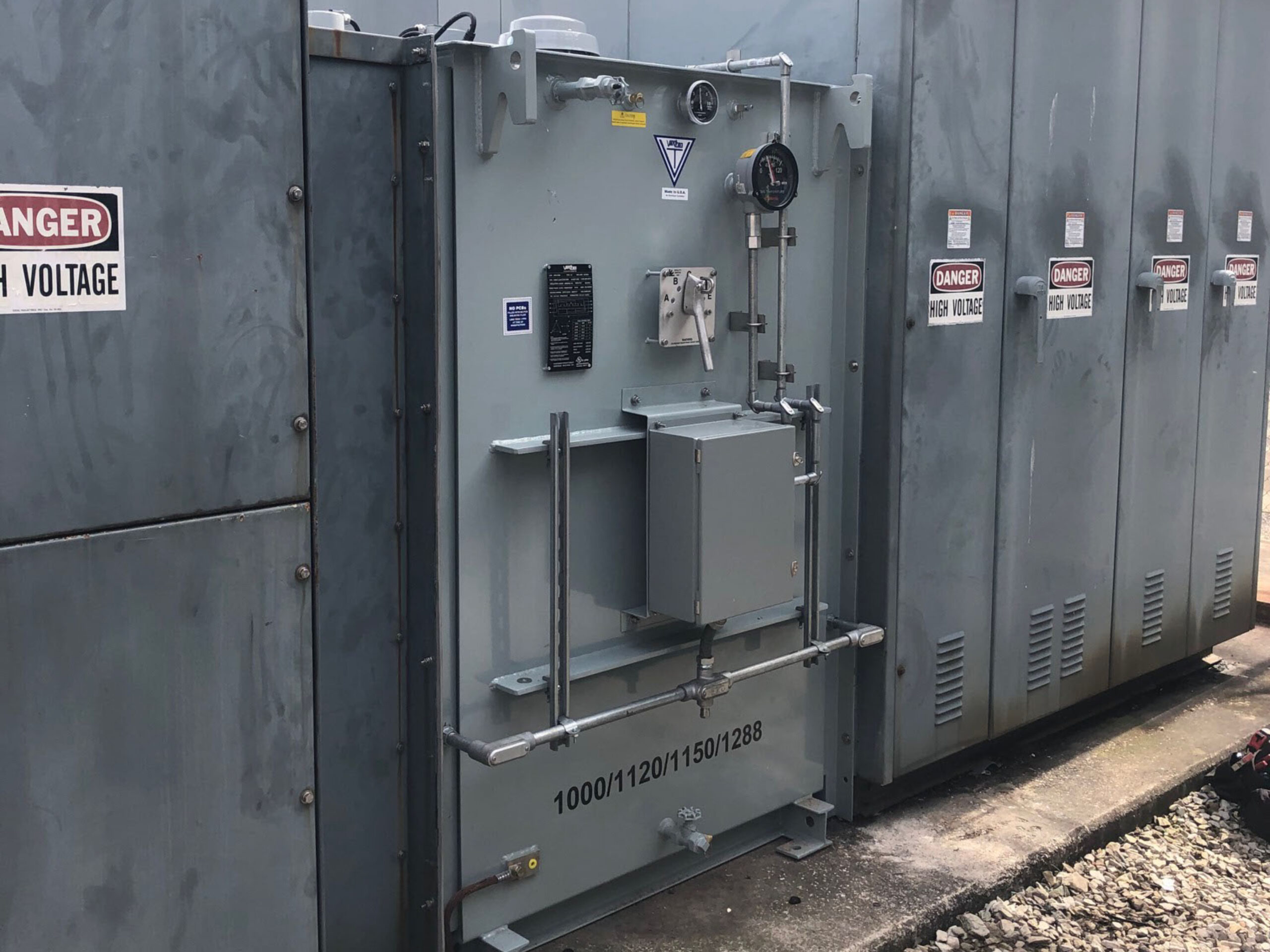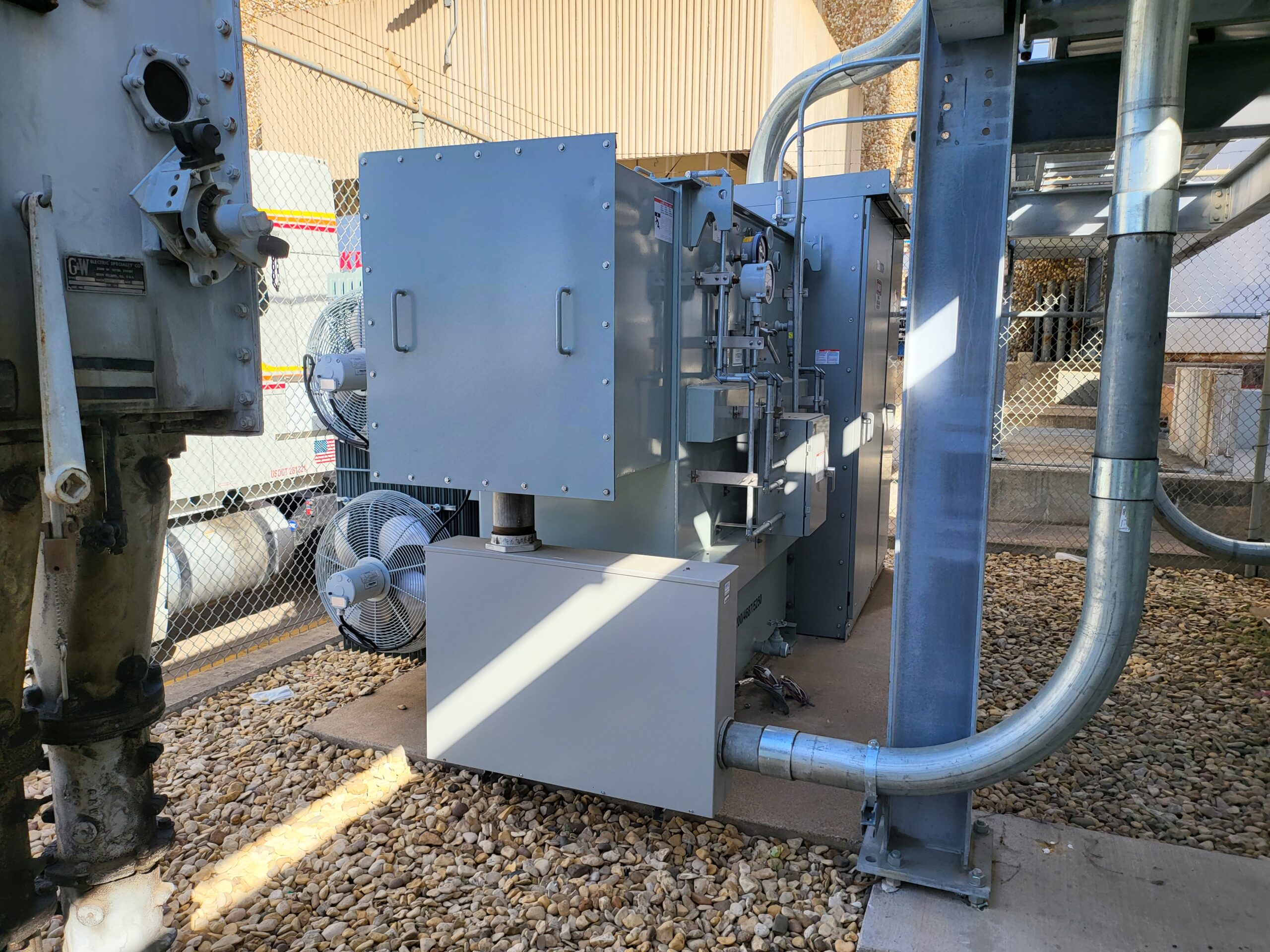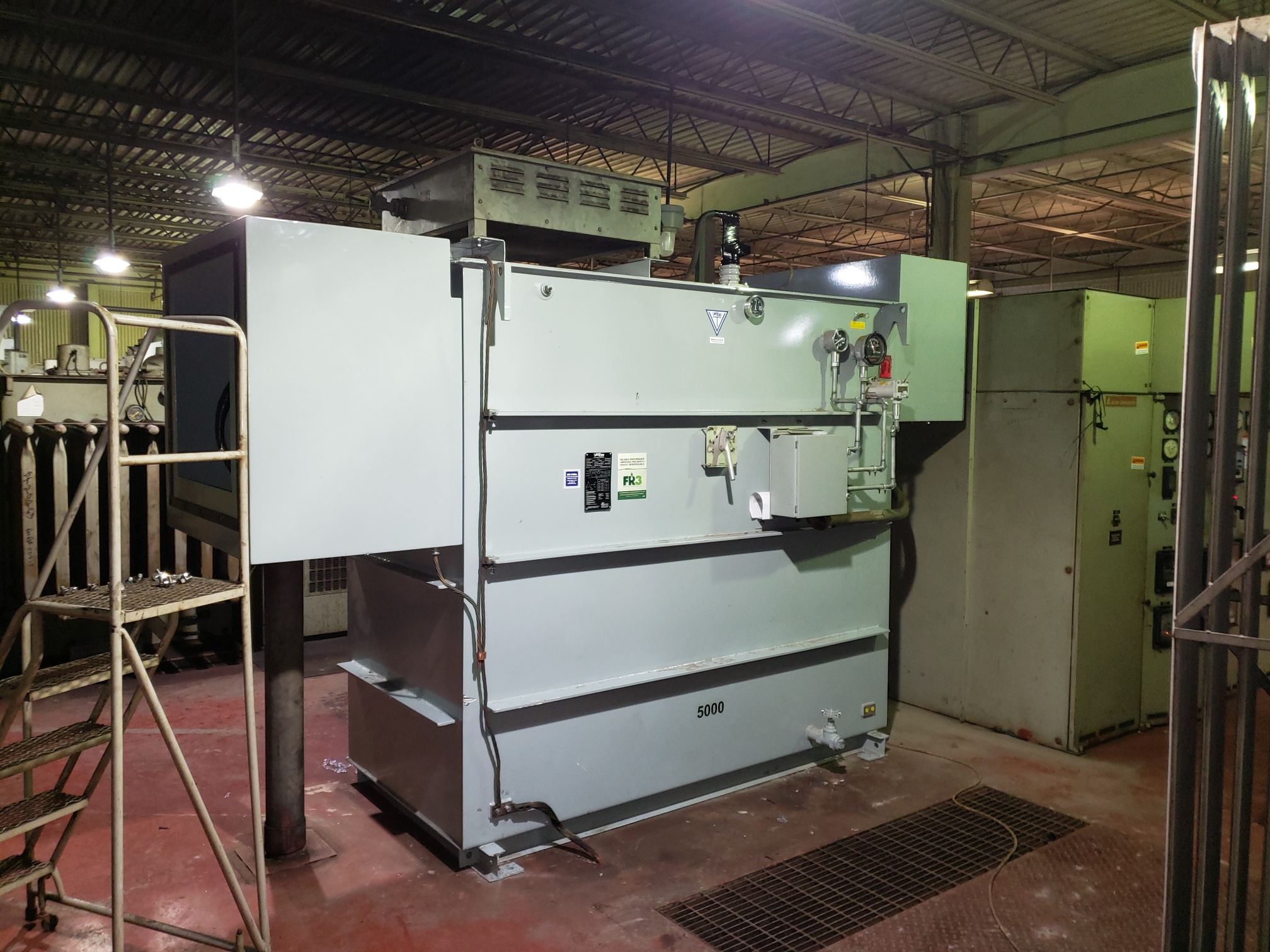How long do liquid-filled transformers last
A transformer’s useful life cycle can be 20 years or more when operated within its design limits and under observation within a preventative maintenance program.
Things to monitor
It’s recommended that there be an annual inspection and routine monitoring of critical electrical infrastructure. Here are some areas to monitor during your inspections:
- Check oil level and internal pressure, taking into consideration ambient conditions, as can suggest a fluid leak. During cold temperatures, gas pressure may be negative as fluid volume reduces. The opposite occurs during high ambient temperatures and transformer load.
- Check for accumulation of fluid on the sides of the transformer or ground as this is an indication of a leak.
- Paint finish that may have been damaged and is showing signs of rust.
- Confirm wiring connections between device contacts and terminals in the control box.
- Fan operation. (if applicable)
- Dissolved Gas Analysis (DGA) of the fluid which can, over time, diagnose aging trends and events that may lead to a shortened life span.

With proper monitoring and maintenance, warning signs will become evident to let you know that your transformer is nearing the end of its life. When the diagnosis signifies near end of life for a liquid-filled transformer, there are several options available before a catastrophic failure and a forced outage.
- Purchase a new custom transformer
- Purchase a refurbished transformer
- Repair or refurbish existing transformer
Purchase a new custom transformer
The first, and most optimal, option is procuring a new transformer that has the same form, fit, and function as the unit being replaced. Some transformer manufacturers can customize to a certain extent, but not to the degree of limiting civil work and electrical infrastructure reconfiguration when making the exchange.
VanTran can customize a solution to match the footprint of the existing transformer taking into consideration surrounding constraints and existing electrical connections that reduce outage time and cost.
Another benefit of purchasing a new transformer is just that, you are purchasing a new transformer. This plug-and-play transformer will arrive to your facility with an expected life cycle of 20-30 years, giving you peace of mind in knowing that operations can run as scheduled.
The last major benefit to make note of is the possibility of future growth and the role your transformer plays. As operations grow, so do the demands of your electrical system. Use this opportunity to look towards the future and plan your replacement accordingly, whether that be increasing the kVA capacity or reducing running costs by improving efficiency.
Purchase a refurbished transformer
While this option can potentially be a quick fix, it is not the best long-term solution. Exchanging the existing transformer with a refurbished unit requires that the refurbished unit have a similar kVA rating and the same primary/secondary voltages and connections (wye or delta). This could be a challenge if the incoming primary voltage is unusual or paralleling transformers require matching impedances.
Another potential challenge is the issue of form and fit. Some transformers are placed in such a way that installation becomes difficult due to footprint, clearance, and interfacing with existing switchgear. These potential challenges could lead to extended outage times while you prepare the site for a less-than-ideal transformer – making do.
In addition to the potential challenges above, there is the lingering concern about the useful life of a refurbished transformer. What was the reason for it being taken out of service? How long had it been in service? Had it failed in service, and why? What was the fix? Was the refurbishment carried out by the Original Equipment Manufacturer? Extended warranties help with early mortality replacement but may not lead to the same useful life as a new transformer – kicking the proverbial problem down the road.
Repair or refurbish existing transformer
One option is to repair the transformer onsite if the diagnosis is isolated to a malfunctioning switch and/or internal lead connection that is accessible from the cover access panel.
To make the necessary repairs, an outage is required to de-energize the transformer and likely drain some of the dielectric fluid, ensuring the levels do not go below the core and coil assembly. If the fluid level gets too low, the insulation will be exposed to ambient conditions and possibly lead to an extensive dry-out process.
Proper fluid handling equipment is necessary to ensure clean fluid is returned to the transformer, and a dry nitrogen blanket is added after sealing the tank. Once completed, a fluid sample should be sent off for testing to ensure dielectric strength and moisture concentrations are acceptable before re-energizing/loading the transformer.
If the transformer cannot be repaired onsite, then the unit could be sent offsite for repair. This option may not be feasible if operations cannot shed facility load or have another transformer on-site to take on the additional load. If another transformer is onsite, the remaining transformer would be loaded to a greater extent and reducing its useful life and leaving the site exposed if it fails causing a forced outage and lost production.




